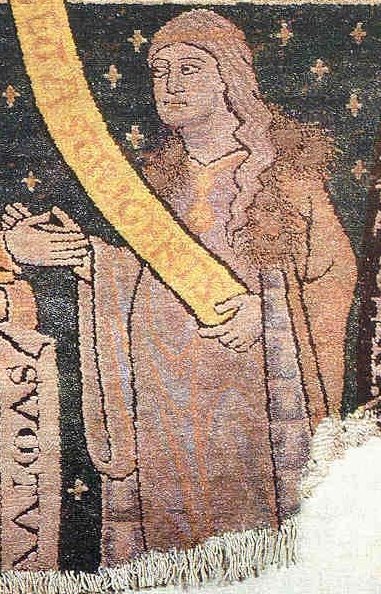 I'm leaving tonight, on the train, to go back to Geneva. The week went by quickly. We went to Quedlinburg so that I could look at a 12th century tapestry, now in fragments, representing the Marriage of Philology and Mercury.
I'm leaving tonight, on the train, to go back to Geneva. The week went by quickly. We went to Quedlinburg so that I could look at a 12th century tapestry, now in fragments, representing the Marriage of Philology and Mercury. Here we see Piety and Justice embracing.
The Church this tapestry was housed in was an SS meeting hall for Nazi ceremonies during the war.
War as Timeless
In early pictures
Hitler wore shorts,
leiderhosen, sat with dogs,
a friend to babies.
These are the politicians
that make the decisions
that leave holes in faces
as well as places.
Shattered minds now
as when in ancient times,
altars destroyed, spears thrown,
the god of war cried out and made himself be sculpted.
I wonder what the Nazis thought of the tapestry, or of philology. Wagner was a great friend of Nietzsche, and philology was often used for nationalistic purposes. The origins of languages and the fascist cause, bosom buddies, and the dangers of wanting to own history, dictate the future.
I think she looks lovely, holding hands with Mercury. He says, I am yours, in a ribbon unrolling across his body. I am still deciphering her words. The tapestry was apparently commissioned by an abbess named Agnes, for the Pope. I am glad she didn't have to live to see the 20th century.
A visit to the Pergamon
Eros has wings and serpent legs,
and he is doing things to men.
With one bent foot under his squatting body,
his buttocks, muscles and folds of skin
betray the tension of battle, captured on the wall.
In the center of the hall gathers all the youth of Germany,
who spotted, braced and badly dressed, stare at each other,
as altars to new gods, at the Pergamon Museum.


No comments:
Post a Comment